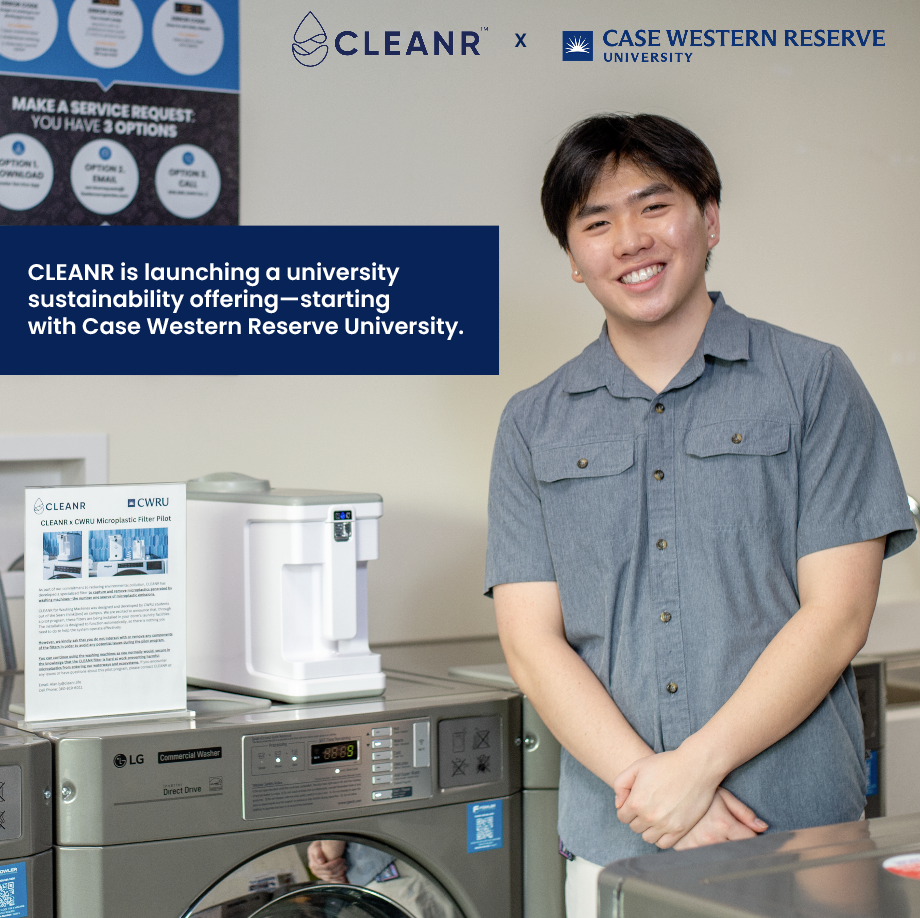Case Western Reserve University is partnering with alumni-founded startup CLEANR to reduce plastic pollution from student laundry rooms. The initiative, launched in April, began with a pilot at the Stephanie Tubbs Jones Residence Hall and will expand to other dorms after testing and evaluation, according to a university announcement.
CLEANR’s technology, designed by three CWRU alumni, David Dillman, Chip Miller and Max Pennington, attaches directly to washing machines and captures up to 90 percent of microplastic fibers shed during wash cycles. Any remaining particles are small enough to pass through wastewater systems and into Lake Erie. The filters are based on the company’s VORTX system, a vortex-driven design inspired by filter-feeding fish, and are certified by the Shaw Institute for removing fibers as small as 50 microns.
Each installed filter can prevent the equivalent of 56 credit cards’ worth of plastic from entering waterways every year. For a campus of over 5,000 residents, the potential environmental benefit is significant.
The effort aligns with CWRU’s Climate Action Plan, which calls for reducing waste and pollution through practical campus projects. The university’s Sustainability Ambassadors and Residence Hall Association are helping monitor maintenance and usage. Each filter requires under a minute of weekly upkeep, and students who work with the project team help track the amount of microplastics captured.
Cleveland’s proximity to Lake Erie makes the project especially relevant. The lake is among the most microplastic-polluted freshwater bodies in the world, according to studies by the Rochester Institute of Technology and NOAA’s Great Lakes Environmental Research Laboratory. CLEANR’s founders said the partnership with their alma mater demonstrates how universities can reduce pollution at the source while contributing to regional restoration goals.
University officials said data from the pilot will determine how quickly the program can expand to all residence halls. The long-term goal, according to CLEANR’s leadership, is to eventually make the system “as standard as seatbelts in cars” and included in every washer.
For now, students may not notice much change when doing laundry, but the filters beneath the machines are quietly trapping plastics that would otherwise flow downstream. For CWRU, it’s a small change with a measurable impact, one load of laundry at a time.


